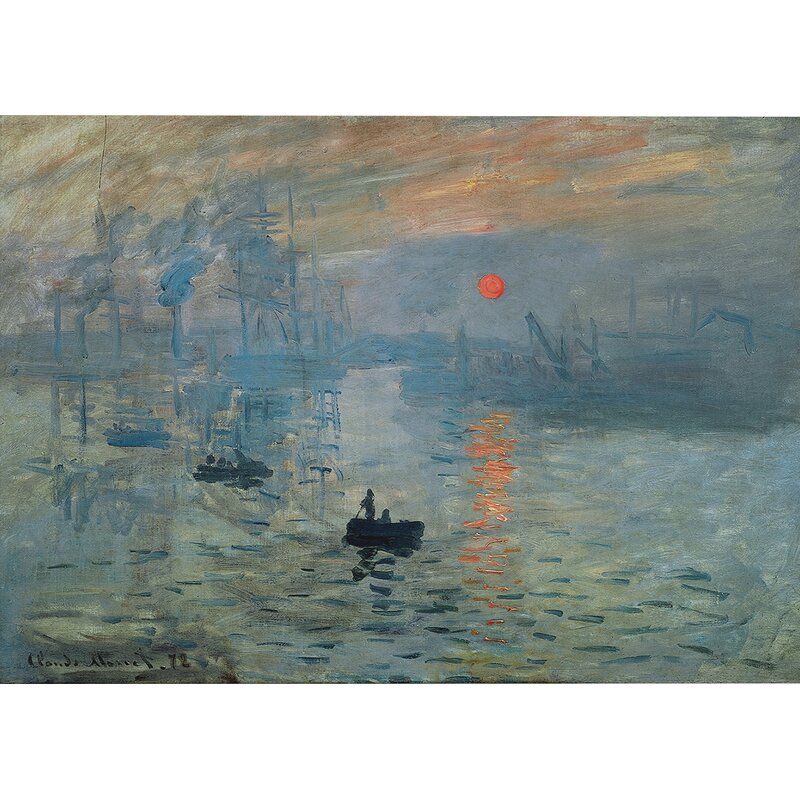

Despite its simplicity, the composition is dramatically effective. With its forceful, clear shape and strong color, the Sun is the keynote of the canvas, which relies on the opposition of complementaries or near complementaries - orange and blue. Colors are placed side by side and are mixed optically by the viewer’s eye. Layering gray in different tones, the artist provided depth despite imprecise details. Painted with loose brush strokes, it is meant to only suggest the scene rather than to mimetically represent it. The colors are very restrained and the paint is applied not in very thin washes. A slight sketch, completed on the spot in a single sitting from a window of Monet’s hotel room, it strays from traditional landscape painting and classic, idealized beauty. The focus of the Impression, Sunrise painting is almost entirely on color and light, emphasizing the breaking sunlight and its undulating reflections. Monet sought to perfectly capture the morning in evanescent detail and his medley of blues and oranges depict this fittingly. Painted after the defeat of France in the Franco-Prussian War of 1870–71, it has been suggested by art historians that it celebrates the post-war regeneration of the country.Īrt historian Paul Tucker suggested that while Monet's work is "a poem of light and atmosphere", it can also be seen as "an ode to the power and beauty of a revitalized France." In the background, there are also other misty shapes such as smokestacks of packboats and steamships and other masts and chimneys silhouetted against the sky. This particular work depicts Le Havre port at sunrise, featuring two small rowboats on the water in the foreground, the red rising Sun as the focal point and clipper ships with tall masts in the background.
#Claude monet impression sunrise original series#
Monet visited the city in 1872, proceeding to create a series of works depicting the port. The six painted canvases depict the port "during dawn, day, dusk, and dark and from varying viewpoints, some from the water itself and others from a hotel room looking down over the port."

The iconic painting depicts Le Havre in the Northwest of France, Claude Monet's hometown. Collection Musée Marmottan Monet. Captions, via Creative Commons However, of all of the pieces displayed there, Impression, Sunrise became the most famous due to the criticism it attracted, which gave rise to the name of the movement.Ĭlaude Monet - Impression, Sunrise, 1872. The painting was shown alongside over two hundred works by thirty artists, including Edgar Degas, Camille Pissaro, Pierre-Auguste Renoir and Alfred Sisley. The movement itself was set in motion with a single work of art - Claude Monet's Impression, Sunrise. Painted in 1872, this light and airy landscape painting was first shown at what would become known as the Exhibition of the Impressionists in Paris in April 1874. Impressionism is considered to be the first revolutionary art movement that echoed the abstract thought that followed years later. Considered the catalyst of Modern art, it has played a pivotal role in art history, with its influence evident in a range of artistic practices.


 0 kommentar(er)
0 kommentar(er)
